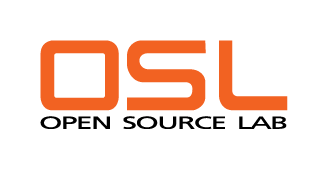|
← Revision 16 as of 2001-12-16 00:26:00
Size: 2682
Comment:
|
← Revision 17 as of 2001-12-16 00:27:15 →
Size: 2728
Comment:
|
| Deletions are marked like this. | Additions are marked like this. |
| Line 32: | Line 32: |
| * Reboot with 3Com. | * Reboot with 3com AirConnect SeattleWireless:AirconnectComments. |
This document goes hand in hand with the DebianLinuxAccessPoint page. Once your image is created this shows you how to load the image onto a FujitsuStylistic1000. You can download it in two formats:
The [http://www.personaltelco.net/download/warez/debian-ap-20011211.tar.bz2 tarball]
A dd [http://www.personaltelco.net/download/warez/debian-ap-20011210.img.bz2 image] (requires a 340mb drive).
If you think that you've found a bug in the image please report it on the DebianApImageBugs page, make sure you include enough information for me to duplicate it. -- AdamShand
See also: HostApMode
Using the dd image
- Put drive in laptop, it should show up as /dev/hde (if it doesn't you'll need to adjust the rest of the document accordingly).
This took up about 15 miuntes on a 166 MHz Toshiba Notebook
# bunzip2 -dc ImageFileName.bz2 | dd of=/dev/hde 666144+0 records in 666144+0 records out #
- Put drive in Fujitsu, and boot it.
- Wow it even does IPv6!
Oops, it didn't recognize the DLink DWL-650 cause
prism2: GetNextTuple: No more items
- Login as root, no password.
Oh yeah, its a CardBus card, and the Fujitsu doesn't do CardBus.
Reboot with 3com AirConnect AirconnectComments.
Using the tar ball
- Put drive in laptop, it should show up as /dev/hde (if it doesn't you'll need to adjust the rest of the document accordingly).
- Format the disk (if you don't have cfdisk, normal fdisk will do just fine):
# cfdisk /dev/hde I set my partition table up like this and it seems to work fairly well. {{{hde1 Boot Primary Linux 299.93
hde2 Primary Linux swap 41.15}}}
- Format the filesystem (we'll upgrade to EXT3 later):
# mke2fs /dev/hde1
- Mount the drive:
# mount /dev/hde1 /mnt
- Untar the image onto the drive (note the image is compressed with bzip2 so it will require a recent version of tar and the bunzip2 utility), on my laptop this takes 2 or 3 minutes:
# tar Ixvf /mnt/debian-ap-image-yyyymmdd.tar.bz2 -C /mnt
- Chroot into the mount point so that you can
# chroot /mnt
- Update the filesystem to support EXT3:
# tune2fs -j /dev/hde1
- Modify /mnt/etc/lilo.conf so the top section reflects the current device name of the drive
Make the image bootable with lilo (first # exit out of the chroot'ed environment):
# lilo -r /mnt -C /etc/lilo.conf
- Boot the drive up in the Stylistic and then install grub (do this on the Stylistic):
# grub-install

